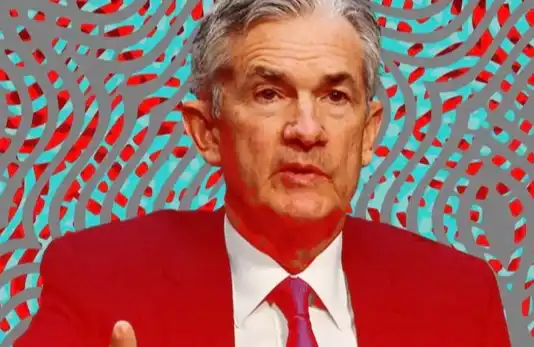LD Capital: Analyzing BTC Price Fluctuations from the Perspective of the US Federal Reserve's Monetary Policy Cycle.
Original Title: "LD Capital: BTC Price Changes from the Perspective of the Federal Reserve's Monetary Policy Cycle"
Original Author: Lisa, LD Capital
Almost all asset prices are affected by the monetary and fiscal policies of the Federal Reserve, and BTC is no exception. Being in the crypto market requires constant attention to various economic data, the attitudes of Fed officials, and the direction of monetary policy in the United States. With the approval of BTC spot ETF, the impact of the US dollar tide on the crypto market will become more apparent. This article will mainly focus on the trend of BTC prices at different stages, as shown in the following figure.

The Fed's last rate hike before starting to cut rates
Time: 2018/12 to 2019/7
BTC price performance: first horizontal, then rise, about 3500 rose to 12000 US dollars.
Start time of the main bull market: 2019/4 (similar to the slowing down of the market in 2019/5), which can be considered as the market anticipating a rate cut in trading three months in advance.

This historical period corresponds to the current stage of the market. It has been about 6 months since the last time the Federal Reserve raised interest rates (July 2023). Similar to the past, the price of BTC also experienced a major uptrend in October 2023 (3 months after the end of the interest rate hike). Over the past six months, the price of BTC has been greatly influenced by ETF expectations, but it still coincides with the pattern of the previous cycle in terms of time and form.

The Federal Reserve begins cutting interest rates to pre-pandemic levels
Time: 2019/7 to 2020/3
BTC price performance: first fell, then rose.
After the interest rate cut, the price began to decline, dropping from around 10,000 to 7,000 in December, a decrease of 30% (during which the end of the balance sheet reduction in September 2019 did not have a significant positive impact). From December 2019 to February 2020, the price rebounded to 10,000.

This stage is the phase that the market will enter in 24 years. Historically, after the last interest rate cut and the end of the balance sheet reduction, the overall performance of BTC was to first fall and then rise.

The cooperation between the two stages can be used to determine the high and low positions of the stage from the perspective of NUPL.
Impact of the Epidemic on the Loose Stage
After March 2020, affected by the Covid pandemic, the Federal Reserve quickly lowered interest rates and launched a large-scale QE. Coupled with the halving in May 2020, the market briefly declined before ushering in the main uptrend. BTC roughly rose from 5000 to 65000.
The top of the BTC market appeared in November 2021. It is 4 months away from the end of the loose period (the first interest rate hike in March 2022), and it can be considered that the market is trading the interest rate hike expectation 4 months in advance, which is relatively close to the time difference of trading the interest rate cut in advance before.
Without a black swan event, it is unlikely that this bull market will see such radical monetary policies and rates or magnitude of increase again, but the direction remains the same.

Restarting Contraction, Fed Begins Final Rate Hike
Time: From March 2022 to the last interest rate hike in July 2023; starting from June 2022, the balance sheet reduction has been implemented until now.
BTC price performance: dropped from around 46000 to 16000, and began to rebound in early 2023 after about 9 months of decline.
In early 2023, the rise of BTC and the NASDAQ index may be synchronized, which could be related to the market's expectation of a temporary peak in US bond interest rates and a slowdown in the Fed's rate hikes.

Overall, the impact of interest rate cuts on the BTC market appears to be greater than that of balance sheet reduction. So when will the interest rate cuts begin this year?
The Chairman of the Federal Reserve, Powell, sent a "dovish" signal after the December FOMC meeting, leading to an increase in expectations of a rate cut. However, the latest data from the United States is relatively strong, with the December CPI increasing by 3.4% year-on-year (previous value 3.1%), and the core CPI increasing by 3.9% year-on-year (previous value 4.0%), both higher than expected. At the same time, the labor market remains tight, and the current market expects a 52.88% probability of no rate cut in March.

For the expected interest rate cut of 24 years, it will either happen in March or May. Looking at the situation, there may be a wave of pullback in the market. Of course, spot ETF is a bigger disturbance to the market, and the landing of benefits and the selling pressure of GBTC are the main factors affecting the price of BTC recently. At the same time, the halving time of BTC is much earlier than the previous cycle (the previous halving occurred 10 months after the start of the interest rate cut), and this halving happens to be sandwiched between the two expected interest rate cut starting points in the market. Although the rise after the halving benefits usually lags behind the actual date of occurrence, it can still partially smooth out the possible decline after the interest rate cut from a time perspective.
Original Link
Welcome to join the official BlockBeats community:
Telegram Subscription Group: https://t.me/theblockbeats
Telegram Discussion Group: https://t.me/BlockBeats_App
Official Twitter Account: https://twitter.com/BlockBeatsAsia
 Forum
Forum OPRR
OPRR Finance
Finance
 Specials
Specials
 On-chain Eco
On-chain Eco
 Entry
Entry
 Podcasts
Podcasts
 Data
Data


 Summarized by AI
Summarized by AI







